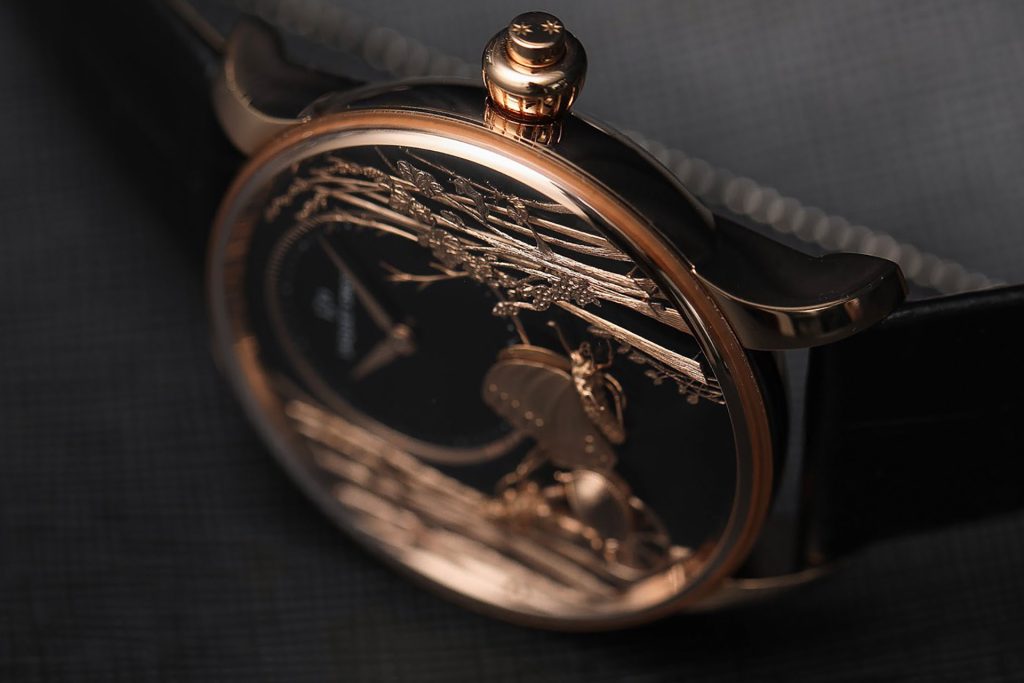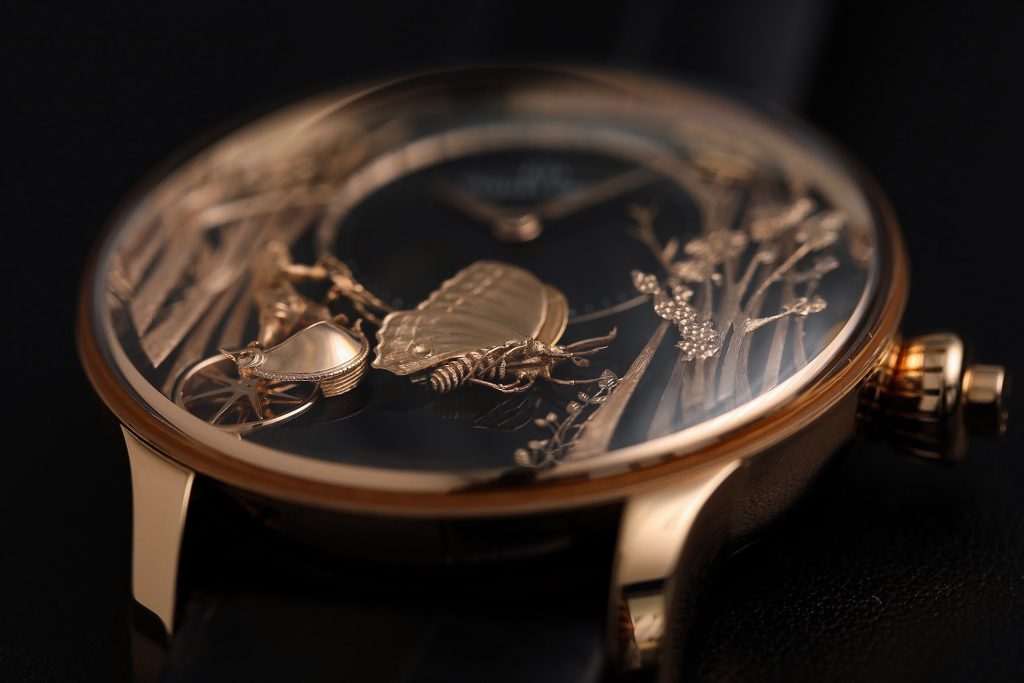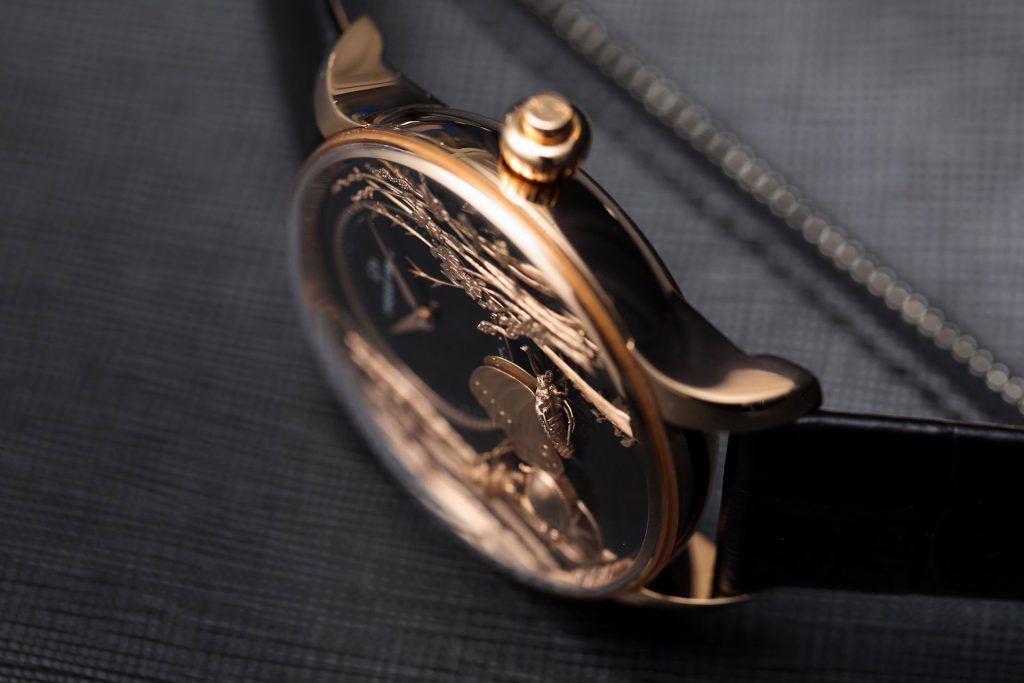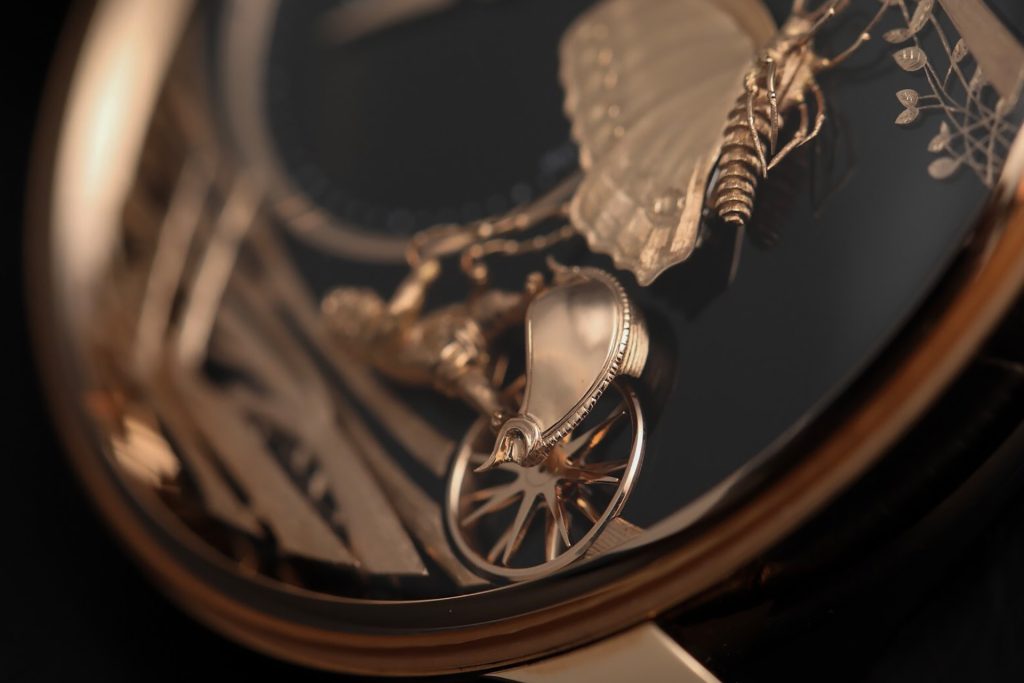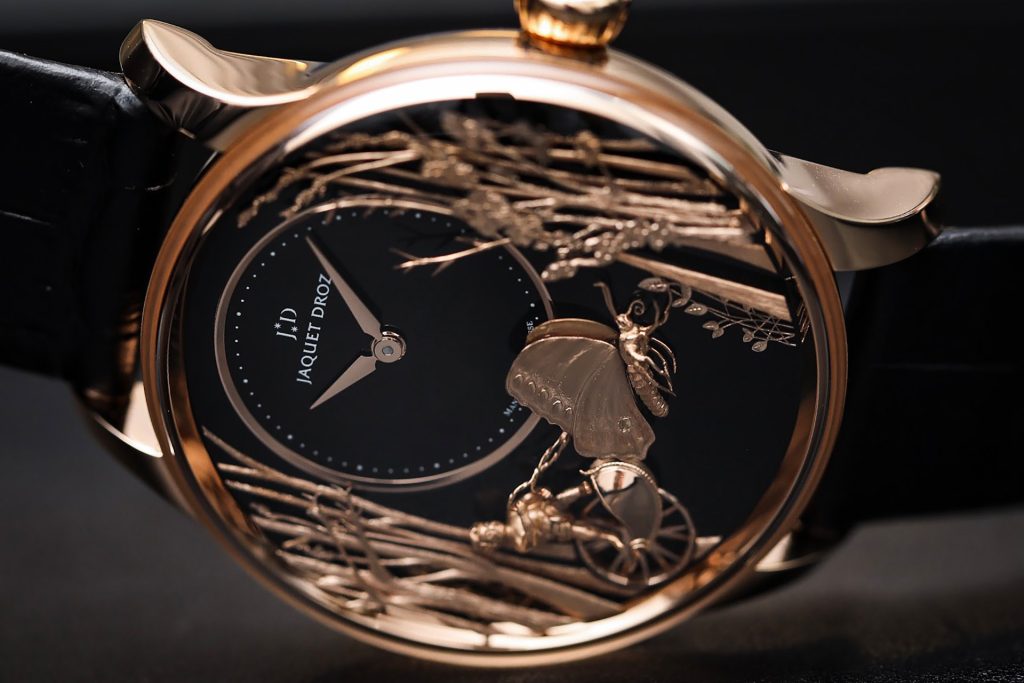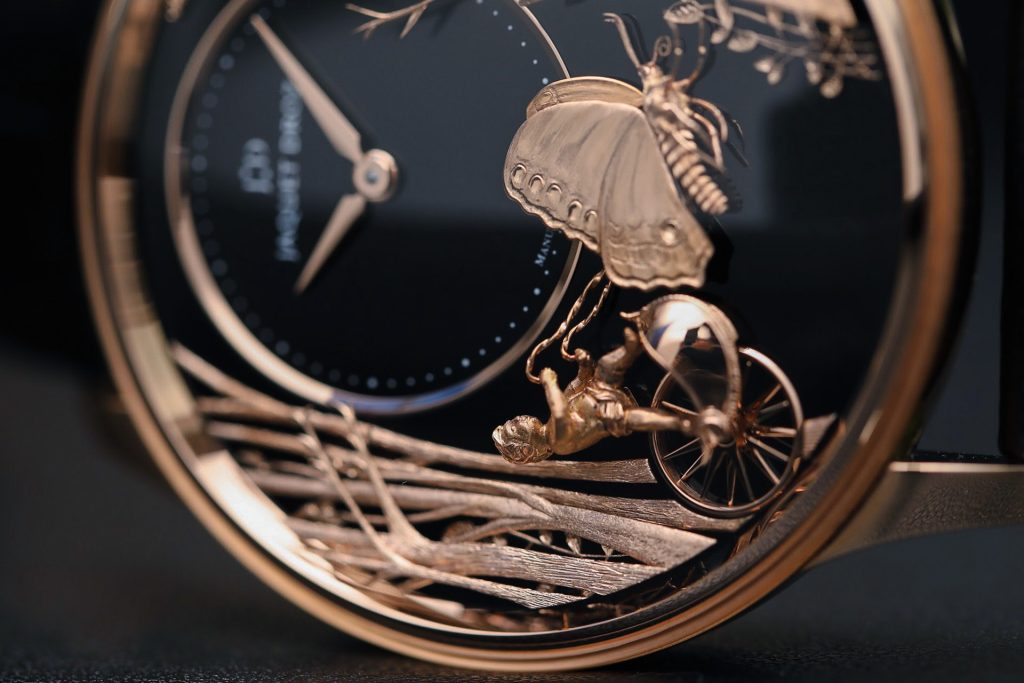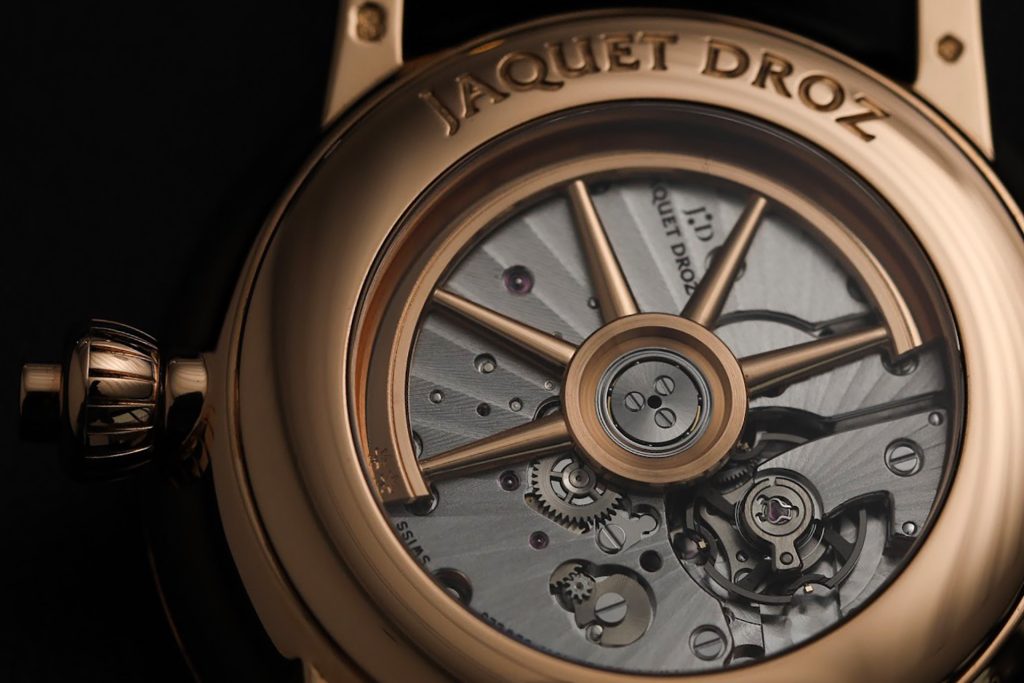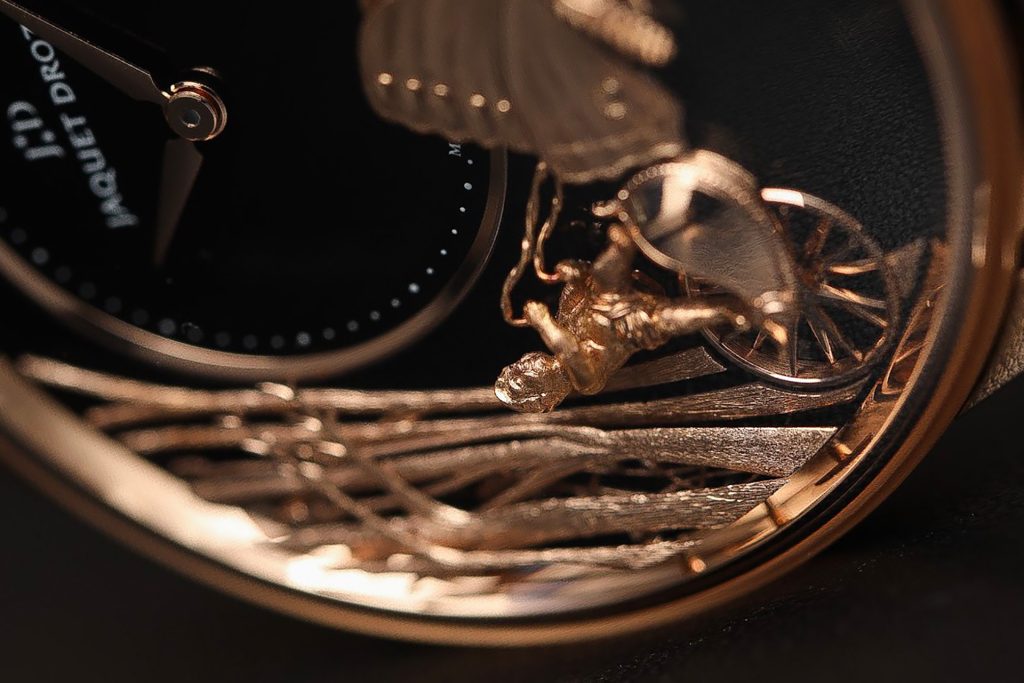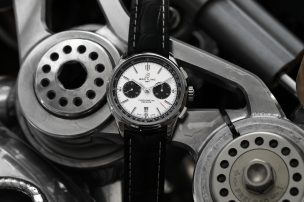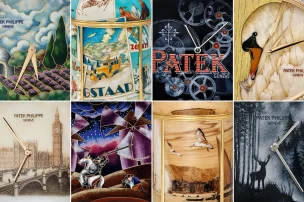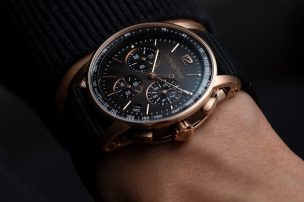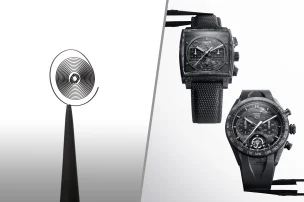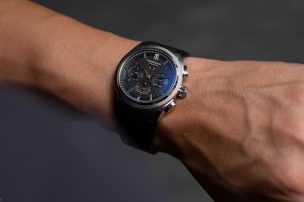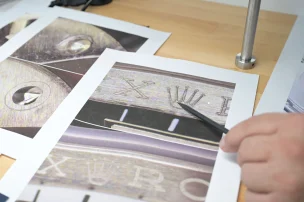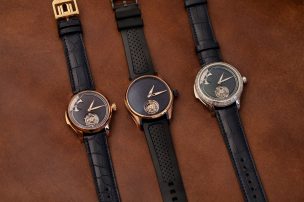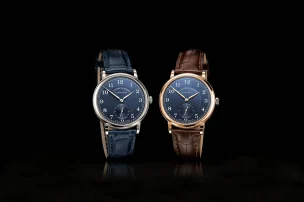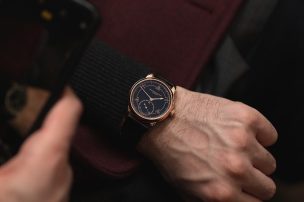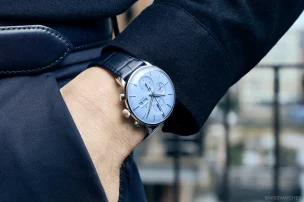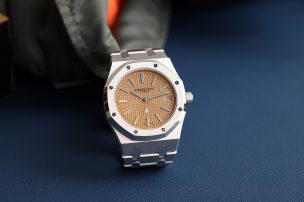
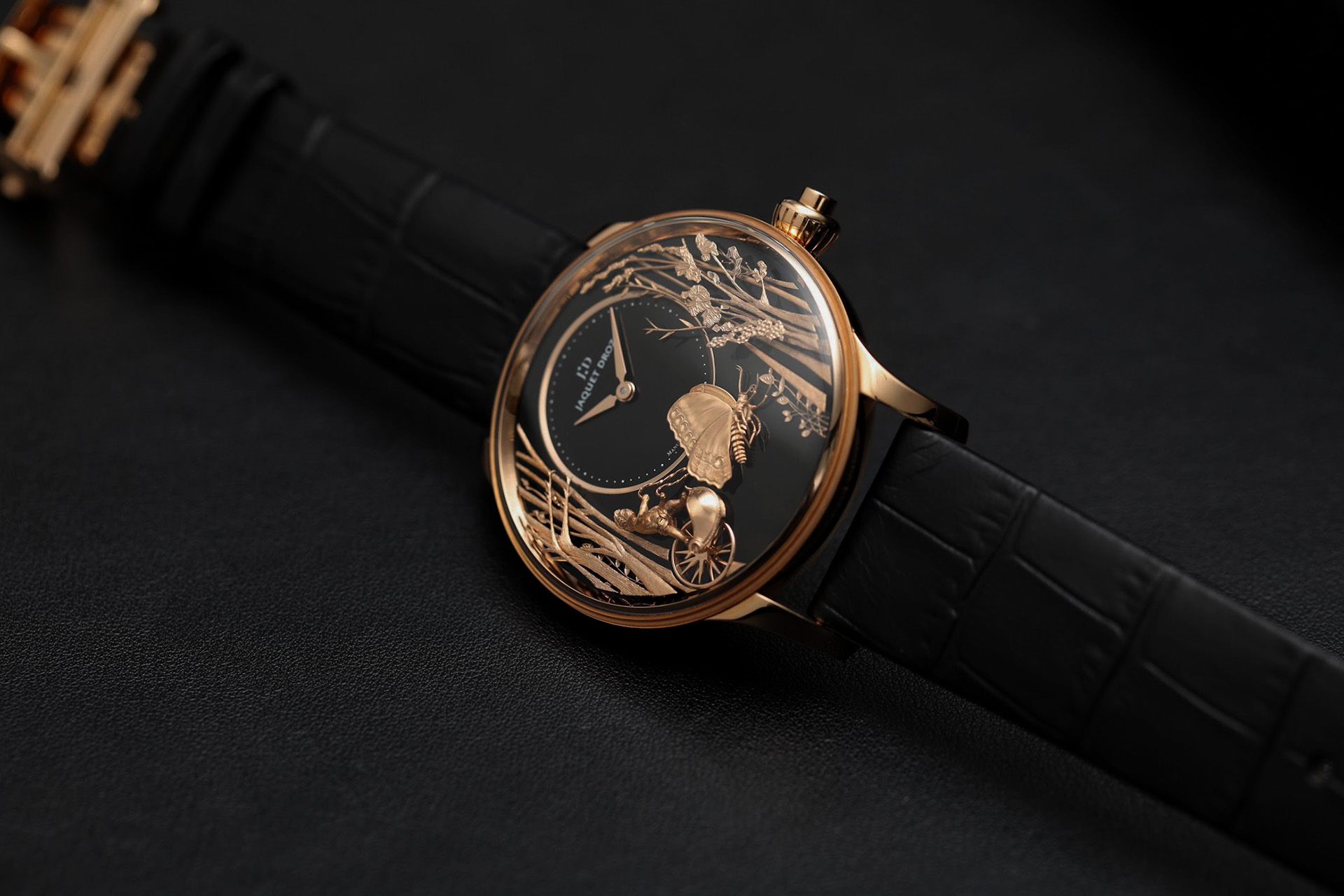
Blinded By Love – Jaquet Droz Loving Butterfly Automaton
At the time when Pierre Jaquet-Droz was born in 1721, the golden age for automatons just started. The engineer Jacques de Vaucanson enchanted the people with his ‘mechanical duck’, made of more than 400 moving components and able to move its wings, chatter and sip water. The young watchmaker Pierre Jaquet-Droz was fascinated by this ingenious mechanical robot and it encouraged him at the same time. So, additional to pendulum- and pocket-watches he also started to create music playing automatons and singing birds. One of the first automaton-watches (a pendulum watch) was ‘The Shepherd’ that Jaquet-Droz brought to Spain in 1758. Together with his son Henri-Louis Jaquet-Droz and their mechanist Jean-Frédéric Lechot, in 1774 they managed to build the probably most well-known automatons of all times: The Writer, the Draftsman and the Musician.

Jaquet Droz’s Loving Butterfly Automaton
These automatons were also named androids, as they looked like humans and executed real functions. In a way they are the precursors of the modern computers – they were programmed for certain operations and had a memory system, all pure mechanical of course. The Draftsman was able to draw a sketch of a cherub sitting in a chariot being pulled by a butterfly. Just over 240 years later, the Maison Jaquet Droz adopts this sketch onto the Loving Butterfly Automaton and captures the cherub and his chauffeur, the butterfly, on the dial of a wristwatch. But what’s this all about?
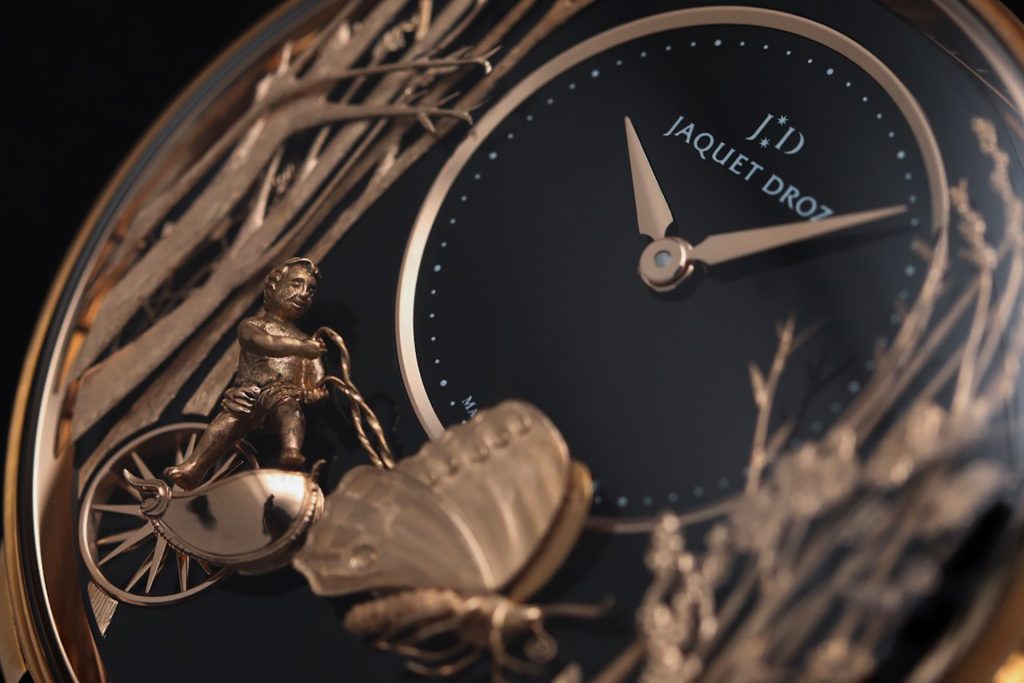
Forty tiny elements expose the mythical drama on the dial
Henri-Louis Jaquet-Droz was very much interested in arts and literature. He was inspired by the tale of ‘Cupid and Psyche’, a romantic drama from Greek mythology. The cherub incarnates ‘Cupid’, the love god. The princess ‘Psyche’ is often portrayed with butterfly wings and the deification of the human mind or spirit. It was probably Henri-Louis’ very personal interpretation of the romantic tale – the mind is controlled by love.
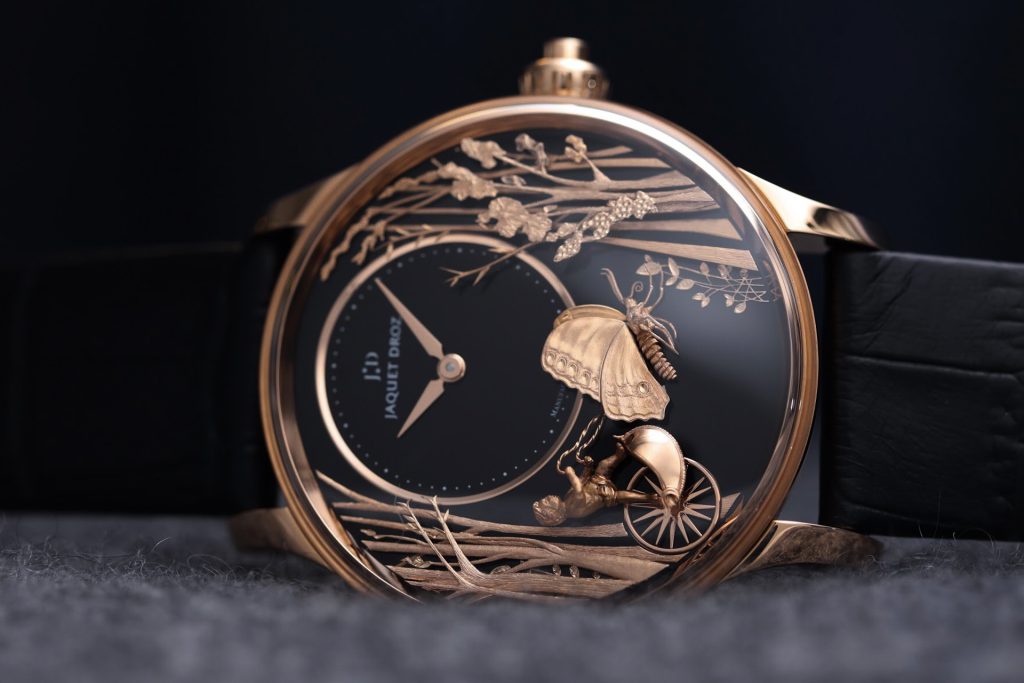
The case and all elements on the dial are made of red gold
Back then, automatons caused a lot of attention, and they still do today – because the miniature-automaton can be admired on the dial of a wristwatch. Jaquet Droz chose the collection ‘Petite Heure Minute’ for this, as it offers enough stage on the dial due to the small time display at 12 o’clock. The love tandem gets moving by a pusher that is integrated into the crown. The tiny butterfly wings flap 300 times in two minutes. At the same time, the cherub’s chariot wheel starts turning. Three barrels deliver the necessary powertrain that also has to be hand-wound from the crown.
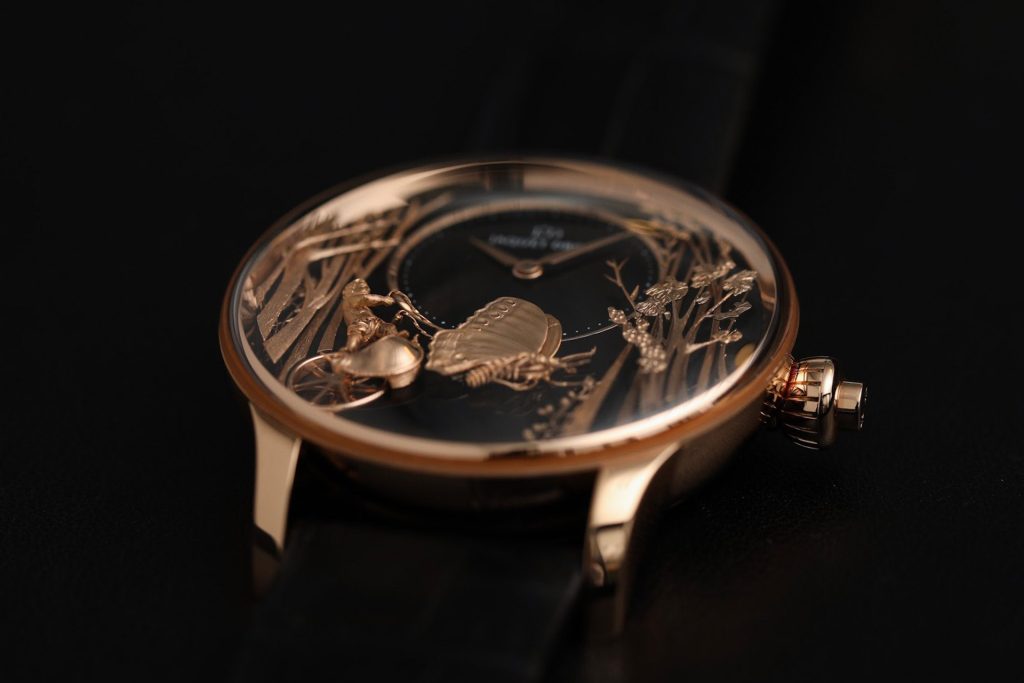
Jaquet Droz Loving Butterfly Automaton
The forest that surrounds the couple reminds of the landscape around the region of La Chaux-de-Fonds, the birthplace of the founding father. The dial alone is decorated by forty elements that have been hand engraved and assembled. Arms, legs, faces, wings and trees are made of red gold. The oscillating weight that appears through the open sapphire glass on the back is shaped like the cherub’s chariot wheel and made of 22-carat red gold. The dial is made of black onyx in an 18-karat red gold case. The balance spring and the pallet horn of calibre 2653 AT1 are made of silicon.

The oscillating weight is shaped like the cherub’s chariot wheel
For most romantics, it will remain a mythical love story – because only 28 pieces of the Loving Butterfly Automaton in this version will adorn the wrists of some very few automaton enthusiasts.
